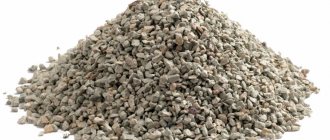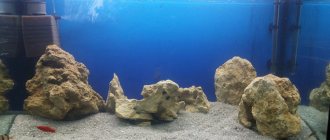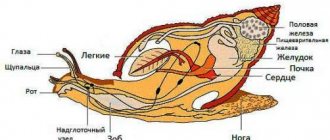Let us pay attention to a natural and quite effective sorbent that helps improve the quality of liquid used for food purposes. Let's take a closer look at zeolite: what it is, application, characteristics, useful properties, features - we'll go through all the important points of its use so that you understand how relevant it is.
Looking ahead a little, we note that today they have learned to synthesize it by growing crystals of the desired, that is, geometrically correct shape - with a structure in the form of a tetrahedron and cavities of the same size, filled with H2O molecules and alkaline earth metal cations. Considering its enormous relevance, artificial production has become a real find and has made it possible to begin comprehensive development of a wide group of drugs and all kinds of cleansing agents.
Natural zeolite: what is it?
This is a mineral, or, more precisely, a group of them - framework aluminosilicates, the origin of which is sedimentary-volcanic. In essence, it is a hardened mineral-lava mixture that crystallized after entering salt water, sea or ocean.
If you make up its external description, then in the form of an agglomerate it looks like very dense clay, but white or colorless, with a pearlescent or glassy sheen. Less commonly, it is brownish-red, with green-blue splashes.
Its chemical composition is as follows:
- silicon – 75%;
- aluminum – 11-15%;
- water – 9-10%;
- other elements – 1-2%.
It is the latter, despite their small share, that determine the type, and therefore the name, of the mineral. Thanks to them, heulandite, erionite, phillipsite, lomonite, ferrierite and, most important for modern science, mordenite and clinoptilolite are distinguished.
Let's talk separately about synthesized zeolite: today about 150 of its varieties can be obtained artificially. The difference between them is the pore size and components. Each of them has a base metal, which is written first, and a lattice of a certain structure (the most relevant are A and X). That's why you often see names like NaX or CaA.
There are also high-silica aluminosilicates, which are considered especially valuable due to completely unique catalytic and adsorption properties. The best and most expensive type is ZSM.
Livestock
Natural zeolite has also found application in the field of livestock farming. It is used as a feed mineral additive. It allows you to strengthen the immune system, normalize metabolism, and prevent the gastrointestinal tract. The miner makes it possible to make offspring healthier. The coat becomes shiny, the animal grows better and gains strength. At the same time, the body's protective abilities are restored.
Thanks to zeolite:
- The nutritional properties of the feed are improved.
- Digestion processes improve.
- The absorption of useful elements increases.
- The physiological condition of the animal improves.
- The lifespan of the animal increases.
- A number of diseases are prevented.
- Productivity increases in adult animals.
- Toxins are removed from the body.
The mineral allows you to improve a number of indicators:
- In cows: milk yield up to 8% per day, safety of newborns by 10%, increase in live weight in young animals - up to 18%.
- In sheep: wool shearing increases to 13%, strength increases to 12%, prolificacy - by 11%, live weight of offspring - up to 14%.
- Pigs: safety of offspring - up to 18%, productivity of young individuals - up to 10%.
According to research, it has been noted that zeolite stabilizes the nutritional processes of young animals and increases overall acidity. It is also noticed that the bones become denser.
How the stone was discovered
Back in the 18th century, it was discovered by Axel Kronstedt: the Swedish chemist conducted experiments on heating stilbite and noticed that the surface of the prototypes began to swell and bubble. Having become interested, the scientist empirically found other aluminosilicates with similar properties. Their family received the name “zeolites”, composed of two ancient Greek words: “boil” - “zeo” and “stone” - “lithos”.
After which, for more than 150 years, the find had exclusively theoretical value, because the researchers did not know how to properly use it in practice. The situation changed at the beginning of the 20th century, when, due to the high absorption capacity of the stone, they began to remove heavy metals, oils and nitrates from petroleum products. Later, the sorption effect was used for the purification of drinking liquids.
A new round of popularity was provided by such a sad event as the accident at the Chernobyl nuclear power plant. Scientists under the leadership of Vasily Ivanovich Bogatov developed a simple but effective means of combating radiation sickness: they mixed zeolite powder with water and gave liquidators this solution. Later, based on this “chatterbox,” the drug “Litovit” was made, which perfectly removed radioactive strontium and cesium from the body.
In parallel with this, sokirnite was used in the Dnieper and Pripyat basins to disinfect wastewater, and was also introduced into plant and vegetable growing - they “fed” growing seeds with it in order to improve their germination. Experiments even began in the field of cosmetology - the sorbent was useful for extracting harmful substances from the skin of the face and body, and they began to make masks that were safe for human health. And, of course, filtration of the flow taken from the central water supply system is a classic use of these aluminosilicates.
Prospects for the use of zeolites in the housing and communal services system in solving water treatment and environmental issues
Soboleva N.F. LLC "Sibir-Zeo", Novosibirsk, Russia Zeolites (translated from Greek as “boiling” or “boiling stones”) were discovered by the Swedish researcher Kronsted almost 250 years ago, but until the beginning of the 20th century these minerals were not paid any attention to serious attention.
According to their chemical structure, zeolites are aluminosilicates. Their skeletal structure contains voids occupied by large ions and water molecules, which leads to ion exchange and reversible dehydration. The crystal lattice of zeolites is formed by tetrahedrons, in the centers of which there are silicon and aluminum atoms, and at the vertices - oxygen atoms. The total negative charge of oxygen atoms is not compensated by the total positive charge of silicon and aluminum atoms, so the crystal lattice carries an excess negative charge. This leads to the fact that the internal cavities of zeolites contain many cations, mainly alkali and alkaline earth metals, which can replace each other. Thus, zeolites have the property of an ion exchanger. A notable feature of zeolites is the presence of a system of voids and channels in their structure, which can account for up to 50% of the total volume of the zeolite, which determines its value as a sorbent. The inlet openings from the channels into the zeolite cavities, formed by rings of oxygen atoms, are the bottlenecks of the channels. The shape and size of these windows determine the sizes of ions and molecules that can penetrate into the cavities, which is what the use of zeolites as molecular sieves is based on. Zeolites are characterized by high ion-exchange selectivity for radioactive elements, sorption capacity for heavy metals, phenol, ammonium nitrogen, etc.
Currently, zeolites are used very widely (see Table 1).
Table 1
| Industry | Type and purpose of use |
| Industry, utilities and ecology |
|
| Livestock |
|
| Crop production |
|
| Food industry |
|
| Medicine |
|
| Ecology |
|
The most “ancient” problem that was solved with the help of zeolites was water purification. Due to their unique adsorption, ion exchange and catalytic properties, natural zeolites work much more successfully than, for example, quartz sand in filters of wastewater treatment plants and water treatment plants.
The first tests of the properties of natural zeolites in Russia were carried out in 1913 on an experimental combined filter at the Yeisk station of the Moscow-Kursk Railway in order to soften Moscow tap water and water from an artesian well for steam locomotive boilers. The first industrial deposit of zeolites was discovered in 1969 on the territory of Turkmenistan (Badkhyz). After this, the raw material base of a new type of mineral, zeolite tuffs, began to be created, and their use for various purposes began. In the 90s, several dozen zeolite deposits were developed in Russia and abroad.
The journal “Ecology and Industry” for 1996 published an article by Doctor of Technical Sciences R.A. Belyaev, representing the Amur Scientific.
In the city of Mirny (Republic of Sakha, Yakutia), replacing the loading of existing quartz filters in treatment facilities with zeolite made it possible to almost double the productivity of the facilities.
The undoubted advantages of zeolite loading of fast filters compared to quartz have been proven at water treatment plants in the cities of Korostel (Dnepr), Petropavlovsk-Kamchatsky, Komsomolsk-on-Amur, Vladivostok, etc. It is very important that zeolite filters play a major role in purifying water from heavy metals (copper, zinc, lead, cobalt, nickel), radioactive isotopes (strontium, cesium, uranium) and nutrients (ammonium ions). Zeolite has also been successfully used for iron removal, water demanganization, and water purification from microorganisms, incl. intestinal viruses. Purification of agricultural and industrial wastewater and atmospheric emissions is one of the most important areas of application of zeolites throughout the world, for example, in Truckee (USA, California), a treatment plant has been operating since 1978 (40 tons of natural zeolite tuff containing up to 70% mineral clinoptilolite), purifying 270 m3/h of wastewater containing ammonium, calcium, sodium, magnesium, potassium. When designing the plant, this treatment method was preferred over the biological system due to the high standard of purity and low temperature of the wastewater. Similar and larger treatment systems have been built elsewhere in the United States.
Particularly harmful in wastewater is ammonium nitrogen, exceeding the concentration limits of which is tantamount to the presence of a poison that is destructive to all living things, incl. and for fish. To preserve fish wealth, Japan spends from 2400 to 4800 tons of zeolite (costing from 0 to 0 per ton) per year to scatter it in coastal areas of the ocean where fish spawn. Thus, {content}.5 million is “thrown” into the ocean annually, and this is quite justified.
Since the 1960s, the use of zeolites for environmental protection in the United States has become widespread, mainly due to the activities of the US Atomic Energy Commission. This commission solved the problem of concentrating and separating radioactive elements from waste water generated by nuclear plants. Thus, natural zeolites are used in this case as radioactive waste collectors.
The problem of neutralizing the most significant volumes of low- and medium-level radioactive waste based on clinoptilolite is being solved on an industrial basis in the UK, France, and Italy. Cuba solved the problem of liquid radioactive waste using technologies using local zeolites, where a special plant with a high level of automation was built. The use of bridges, plugs, barriers and buffers made from natural sorbents is provided for in almost all waste disposal projects being developed in burial grounds, wells, mines, etc. Zeolites are an important component of multi-barrier insulation systems.
Zeolites were used with impressive effect in work to eliminate major accidents at nuclear power plants (Three Mile Island, USA, 1981, Chernobyl, 1986). The situation that arose after the accident at the Chernobyl nuclear power plant led to extremely complex multi-component pollution of the water resources of Ukraine. There was nothing like this in world practice, not only in terms of the scale of work, but also in the complexity of the quantitative and qualitative composition of radionuclides, which mutually interfere with each other during purification.
At the Institute of Public Utilities named after. A.V. The Dumansky National Academy of Sciences of Ukraine developed a technology for clinoptilolite water purification from radionuclides, which was implemented on a number of water pipelines. This technology reduces the level of radioactive contamination of water by up to three orders of magnitude, which made it possible to reach the level permitted by the USSR Ministry of Health for constant consumption. On the basis of this technology, special equipment processing points were also developed and built, which successfully completed their tasks. When developing decontamination compositions to reduce the secondary transfer of radionuclides from roadsides, industrial sites, and “red forests,” scientists’ attention was again drawn to natural minerals, and compositions were developed for fixing and cleaning the surface layer of soil. Contact with contaminated soil for 18 days leads to a decrease in the activity of the latter by up to two orders of magnitude. The composition is applied to the soil surface in the form of an aqueous suspension using existing agricultural machinery; it is well applicable both on sandy areas and on soil with vegetation.
One of the most pressing problems of decontamination has become the problem of cleaning vehicles, equipment, premises, metal products, structures, etc. The use of standard solutions at sanitary treatment points in a 30-kilometer zone based on SF-2 and in combination with oxalic acid for the decontamination of automobile and tractor equipment did not produce the expected results. The residual level of pollution did not decrease to a level of less than 1.5-4.5 mR/h. Compositions based on natural minerals made it possible to reduce the level of radioactivity to 0.1-0.5 mR/h.
Sibir-Tseo LLC (Novosibirsk) has been producing household carbon-zeolite filters for water purification for 10 years. The results of research and testing of filters on model solutions, carried out jointly with the Federal Service for Surveillance on Consumer Rights Protection and Human Welfare “Federal State Health Institution “Center for Hygiene and Epidemiology in the Novosibirsk Region”, indicate that the purification efficiency for iron is 92% ( from 2.8 mg/l to 0.22 mg/l), petroleum products – 92% (from 0.99 mg/l to 0.075 mg/l), lead – 63% (from 0.32 mg/l to 0 .12 mg/l), for pesticides: DDT – 87% (from 0.015 mg/l to 0.002 mg/l), 2,4-D – 68% (from 0.280 mg/l to 0.090 mg/l), benzene – 92.7% (from 0.0590 mg/l to 0.0043 mg/l).
The results of studies of filters on well water, carried out jointly with the West Siberian branch of the Federal State Institution "Federal Center for Hygiene and Epidemiology for Railway Transport" indicate that the smell and taste are reduced from 3 points to 0 points, color is reduced from 30.3 degrees to 18.3 degrees (40%); turbidity – from 5.2 mg/l to 0.5 mg/l (90%); iron – from 0.615 mg/l to 0.162 mg/l (74%).
From 2002 to 2006, specialists from Siberia-Tseo LLC developed and installed more than 10 large water purification systems using zeolite as a filter material.
For example, in 2002, a water purification system from a well was designed and installed in the city of Berdsk, Novosibirsk region (customer: MU OKS in Berdsk). In November 2006 (after the audit and implementation of repair measures in the water purification system in August 2006), sanitary and hygienic studies of drinking water leaving the system were carried out. The results of the study confirmed the effectiveness of the water purification system from the well and bringing its parameters to the requirements of SanPiN 2.1.4.1074-01 (the color indicator decreased from 37.3 degrees to 10.7 degrees, turbidity - from 10.6 mg/l to 1.2 mg/l, iron - from 1.88 mg/l to 0.250 mg/l and manganese - from 0.226 mg/l to 0.025 mg/l).
Since 2003 to 2006 Together with the State Institution Scientific Center for Clinical and Experimental Medicine of the Siberian Branch of the Russian Academy of Medical Sciences, an assessment of the effect of tap water purified with carbon-zeolite filters produced by Sibir-Tseo LLC was carried out.
All tests confirmed that zeolite-based filters bring water to a level where it becomes active for cell culture growth and significantly increases the viability of the cell monolayer.
These and other results allow us to confidently assert that the qualified use of natural zeolites, the proven reserves of which alone amount to about 50 billion tons, will make it possible to solve many environmental, radioecological, medical and biological problems, including in the housing and communal services complex.
The material was published in a collection of articles and reports presented at the IX International Symposium “Clean Water of Russia - 2007”, pp. 325-328.
What is good about zeolite: properties of the mineral
Due to its unique frame structure, loose but strong, and its special chemical composition, it has the following characteristics, useful and important:
MBFT-75 Membrane for 75GPD
SF-mix Clack up to 0.8 m3/h
SF-mix Runxin up to 0.8 m3/h
- Impressive adsorption - its crystal lattice reliably binds a variety of negative substances, from radioactive and heavy metals to nitrates and toxins.
- Active ion exchange - it absorbs particles of the medium (in our case, H2O) and releases minerals to it due to its porosity.
- Catalysis – it significantly accelerates chemical reactions, which is especially important in oil refining.
- The molecular sieve effect - the dimensions of the internal planes and even the pores of different types of stones are strictly individual. Having selected one or another of them, you can sift out or absorb only the necessary substances, for example, exclusively strontium or cesium, and pass the remaining components further through the filter.
Useful properties for treatment
Various types of zeolites have long been successfully used in several branches of medicine. For example, it is used to make products that help with gastrointestinal disorders and food poisoning. In cosmetology, anti-aging masks, cellulite scrubs, and therapeutic muds are made on its basis.
In general, he:
- activates blood circulation;
- normalizes the functioning of the gastrointestinal tract;
- strengthens the muscles of the heart and blood vessels, helping to get rid of tachycardia, ischemia, and bradycardia;
- removes poisons from the body, and also reduces the negative impact that harmful substances could already cause.
Healthy people can also take courses of taking medications containing zeolite - for prevention, because with systematic use of the mineral:
- has a beneficial effect on the nervous system;
- increases immunity;
- normalizes acidity;
- removes toxins and nitrates from food, drink, and air;
- maintains the balance of microelements, which helps prevent a number of diseases.
This results in a surge of energy, strength and vigor, and an improvement in well-being.
Taste properties of water after zeolite
In addition to heavy metals and harmful radionuclides, the stone helps remove fungi, bacteria, and organic contaminants from H2O, and therefore normalizes its organoleptic properties. After such treatment, the unpleasant odor goes away, the sourness and bitterness disappear, perhaps the alkaline level increases slightly, but drinking such a liquid or cooking something with its use becomes much more pleasant, and most importantly, safer for health.
Additional recommendations
Before using the drug, you need to familiarize yourself with some facts, namely:
- For the development of bacterial colonies in an aquarium, two components are needed - zeolite and peat . They need to be added to the soil to prevent the death of beneficial microorganisms;
- a filter with zeolite must be changed periodically, since most of the beneficial substances in it evaporate after just a few weeks;
- If you have a biological filter, you should not use zeolite, since it does not have the good antibacterial properties that are needed for this type of filter element. As an alternative, special ceramics .
It is important to use zeolite correctly in an aquarium.
Filters with zeolite gradually remove useful substances from the water, so experts recommend adding special fertilizers to the substrate . This allows you to maintain the ecological balance in the aquarium at an optimal level.
Tetra General Tonic Tetra Contralck Sidex Tetra Bactozyme Tetra Vital Tetra NitrateMinus Tetra AquaSafe Hydrogen Peroxide
Mining locations
Aluminosilicates are found all over the planet, but they are found in the largest quantities in the Urals. If we talk about Russia, then the Kemerovo region is also rich in them, and there are also a lot of them on the lands of the Krasnoyarsk Territory.
If we talk about the world as a whole, then countries where volcanic activity was observed, that is, Japan and Iceland, and a number of African states have impressive reserves of “boiling stones”.
It is interesting that the rock, as a rule, does not lie very deep, and several types of stone can be found in the same vein. This is due to the fact that the lava mixture that solidified and formed them was heterogeneous in its chemical composition.
Contraindications and side effects
During the first week of taking the drug, you may experience dizziness and a slight feeling of nausea. These effects are considered a normal response of the body to detoxification.
Zeolite has a number of contraindications for use:
- pregnancy;
- lactation period;
- children under 18 years of age;
- individual intolerance;
- gastric and duodenal ulcers in the acute stage.
Zeolite is an effective natural remedy for cleansing the body of toxins, fermentation and decay processes. If you have any questions or have results on using the mineral as a detoxifier, write about it in the comments below.
Where is natural zeolite used: application of the mineral
It is more than relevant and in demand not only in its natural form, but also in its synthesized form - in several key areas of our time, and we will consider each of them right now.
Industry
Aluminosilicates are actively used in the following areas:
SF-mix manual up to 0.8 m3/h
AMETHYST - 02 M up to 2 cubic meters/day.
Aeration unit AS-1054 VO-90
- Construction - added to concrete mixtures to strengthen them, as well as to speed up their hardening.
- Oil production and processing of the resulting products - crushed stone acts as an additive that removes sulfur components and prevents dehydration and desalting. It is also considered an effective catalyst for distillation.
- In the chemical industry, they are included in mineral fertilizers, increase the shelf life of raw materials, prevent caking of bulk materials, and strengthen granular substances. They are also an environmentally friendly alternative to phosphates in detergents, in particular in washing powders.
- Housing and communal services - with their help they purify waste and drinking water, simultaneously making it softer.
Synthetic zeolites deserve special attention: the use of their technical varieties in industry is especially important in the production of rubber, plastic, leather, glued products, containers, and packaging.
Agriculture
In crop production, it is in demand for several qualities:
- as an enricher - manganese, magnesium, cobalt, iron and other microelements;
- as a hardener that prevents destruction and extends the shelf life of fertilizers;
- as a growth accelerator for agricultural crops, increasing productivity, preventing the absorption of harmful substances from the soil, and protecting against diseases.
In livestock farming, crushed stone is an important component of feed and gives it an important boost of minerals, and also prevents it from becoming moldy. Plus, it promotes better absorption of nutritional components, due to which the same cattle reproduce more actively and gain useful weight faster.
The sorption properties of aluminosilicates are used in the manufacture of bedding, on which animals and birds subsequently sleep; finished products absorb odors and moisture more effectively.
Preparations based on “boiling” stones are also poured into man-made reservoirs so that these products destroy viruses, bacteria, and foreign microorganisms in ponds and lakes, thereby creating a favorable environment for fish breeding.
Environmental protection
The natural mineral zeolite will help maintain an acceptable environmental situation (and minimize the harmful effect) in the event of the following dangerous situations:
- large-scale spill of oil, fuel oil and similar chemicals;
- release of ammonia, methane, carbon dioxide and other gases;
- contamination of soil and liquid pools with radionuclides and/or heavy metals;
- ingress of toxins into reservoirs, wells, wells.
Solving home or household problems
Different types of stone are used in the following cases:
- purification and softening of H2O supplied through pipelines of residential buildings and offices - crushed aluminosilicates are a component of the filter backfill;
- saturating the soil with oxygen to accelerate the growth of flowers and plants planted in it;
- absorption of smoke and tobacco smell, stone chips also effectively neutralize unpleasant stagnant air or persistent kitchen aromas;
- absorption of moisture in mixtures and cat litter;
- preventing mold in the bathroom, refrigerator, closet and other places where vegetables are stored - a small fabric bag filled with crushed sorbent is enough for this;
- cleaning of aquariums - slowing down flowering, absorbing waste from fish, crustaceans, mollusks, algae;
- drying and refreshing shoes - inside the shoe, sneaker or boot you need to put a bag of loose mineral.
Application in aquarium keeping
Zeolite for aquarium is an effective cleaner. The only situation when it is necessary to use the product is an excess of ammonium in the water. The reasons for the contamination of water in an aquarium with ammonium compounds are the accumulation of organic residues and insufficiently thorough cleaning of the tank.
There are three ways to properly use zeolite:
- Like a filter;
- As a feed for aquarium inhabitants;
- As part of the substrate.
Zeolite filter
The mineral substance is included in internal filtration systems.
Why use a filter with zeolite:
- To absorb ammonium ions;
- To clean water from dirt particles;
- As a fertilizer for vegetation;
- To remove drug residues.
A zeolite filter is an effective way to get rid of residual antibiotics and antiseptics used to treat fungal and bacterial infections in fish.
Disadvantages of using at home:
- The mineral filler of the filter must be changed periodically, since its effectiveness gradually weakens;
- Inclusion in biofilters is not allowed, since the antibiotic properties of zeolite are weak.
Addition to substrate
To prevent excess nitrates and better saturate plant roots with oxygen, zeolite is mixed with the aquarium substrate, making it more porous and breathable. The thickness of the soil mixture should be 5-7 cm.
The soil is inhabited by beneficial microorganisms, the functioning of which requires a special environment, for which volcanic peat is additionally used as a substrate additive.
Mineral feeding
The only way to use zeolite for the benefit of fish is to add the powdered mineral substance to the main food to prevent infectious disease. When used in moderation, the feed additive is completely harmless, the fish grows faster and gains weight.
How zeolite was used for water in history
Having analyzed the information already available, we will highlight the main milestones:
Main table dispenser AquaPro 919H/RO (hot and cold water)
Main table dispenser AquaPro 929CH/RO (cooling/heating)
Floor dispenser AquaPro 311 (empty, without cooling)
- After the Chernobyl accident, it was bred and drunk to reduce damage from radiation sickness.
- In the 90s of the twentieth century, wastewater began to flow through its two-meter embankment for disinfection.
- In the 2000s, having already assessed its effect, it was used as a filter media that eliminates compounds of hydrogen sulfide, methane, and ammonia, but retains proteins, vitamins, amino acids, and harmless and useful organic matter with a complex structure.
Well, since the 18th century it has been a real find for traditional medicine. “Boiling stones” were immersed in the liquid, they settled it, believing that it became healing, and in some ways they were right, because drinking it strengthened the body.
Zeolite application rates for different crops
| Culture | Quantity of zeolite, kg |
| Vegetables (cucumbers, tomatoes, peppers) | 25-50 kg/100 sq.m |
| Berries (strawberries, currants, raspberries) | 25-50 kg/100 sq.m |
| Shrubs (berry and ornamental) | 0.5-1 kg per plant |
| tall trees | 1-3 kg per planting hole |
| Container plants | 1 kg/4 kg soil |
| Laying the lawn | 25-30 kg/100 sq.m |
Zeolite for water purification today
Nowadays it is artificial stones that are mainly used - they are included in installations as electron acceptors and donors. Due to their crystalline structure and “spongy” absorption effect, they:
- Heavy metals, radioactive elements, phenols, viruses, nitrates, ammonia, ammonium, pesticides, and organic contaminants are removed from the liquid.
- They reduce the concentration of chloride and fluoride ions, remove hardness salts, and promote softening.
Naturally, aluminosilicate of a specific type, for example, clinoptilolite, cannot remove all of the above, because its cells have a certain geometry, which means they retain only particles of the appropriate size. Therefore, one download “from everything” is, unfortunately, just a trick of marketers.
Benefits and harms
The use of zeolite, if the instructions are strictly followed, almost 100% eliminates the possibility of causing harm to aquarium inhabitants. The mineral brings great benefits:
- reduces the concentration of ammonia in aquarium water;
- normalizes acidity ;
- improves water quality, making it more suitable for fish;
- accelerates the growth of aquarium plants, saturating them with useful compounds;
- binds harmful toxins accumulated in water;
- changing the structure of the soil (it becomes more porous), due to which oxygen circulates better in it;
- suppression of unwanted algae in the aquarium and prevention of their active reproduction.
Zeolite reduces the concentration of ammonia in aquarium water
Please note! Sodium zeolite is not used in general aquariums as it may harm fish and shellfish. Aquarium water becomes unsuitable for them and can lead to their death.
Mineral based water filter
What is zeolite used for - natural or synthetic? It will be a more practical filler for a purification plant than, say, the popular quartz sand. Because it gives results relatively faster and at the same time requires less liquid for rinsing.
It is also suitable for effectively removing unwanted contaminants from both flow and standing H2O. When poured in the form of granules or powder, it completely restores natural organoleptic characteristics, that is, normal smell and taste, removing bitterness and/or unpleasant “sulfur” aroma.
Statistics speak better than words; Thus, a catcher loaded with correctly selected stone chips can reduce the level:
- chlorine – up to 65%;
- aluminum – up to 44%;
- copper – up to 78%;
- phenol – up to 83%;
- iron – up to 85%;
- lead – up to 94%.
Recommended dosage
When the amount of ammonium in aquarium water increases to 1 ml per 1 liter of water, it is necessary to carry out cleaning. For 10 liters of water, 10 g of mineral is added. Depending on the intensity of contamination of the aquarium, the dosage may be adjusted. Conversely, if the level of contamination is weak enough, the concentration of the drug will correspondingly decrease.
Activated carbon, zeolite, shungite
Note! There is no need to worry that after adding a mineral, all useful substances will disappear from the aquarium water. When zeolite is used correctly, overdose is impossible.
Therapeutic effects, medical use
The enormous benefits of zeolite for human health are undeniable. The mineral is used as a preventive, immunostrengthening, immunomodulatory agent that normalizes the functioning of all body systems . The stone eliminates toxins and prevents many diseases. It is used to produce cosmetics that have a rejuvenating effect: masks, scrubs, etc.
What diseases does it help with?
The drug has proven itself well for existing health problems:
- bronchitis;
- sinusitis;
- pyelonephritis;
- disorder in the functioning of the cardiovascular system, anemia;
- problems with the digestive system: ulcers, gastritis, liver diseases;
- diseases of the musculoskeletal system;
- diabetes;
- allergy;
- psoriasis and dermatitis;
- healing of wounds, burns;
- food poisoning.
There are drugs that are used even in the treatment of radiation sickness and cancer.
The biologically active additive “Litovit” is prepared on the basis of the mineral. It is presented in the form of powders, tablets, drops, granules, which are allowed to be used after consultation with a doctor.
Litovit











